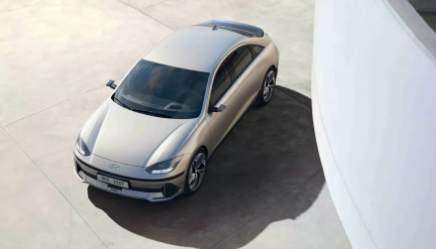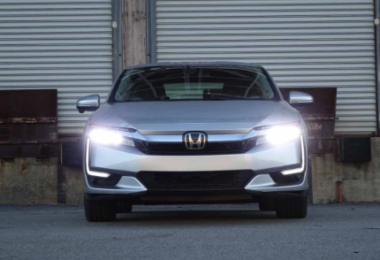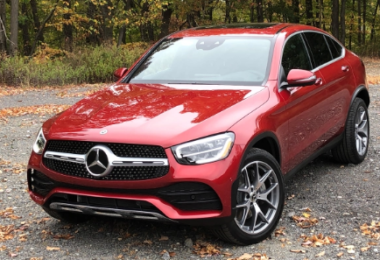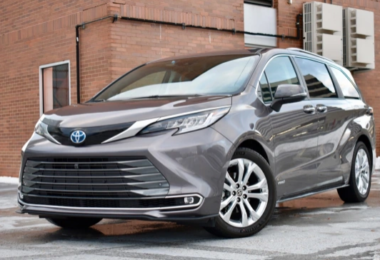Hyundai Ioniq 6 specifications have been confirmed by the South Korean company ahead of the launch of orders for its newest completely electric vehicle later this year. One of the highlights of this EV is its remarkable range.
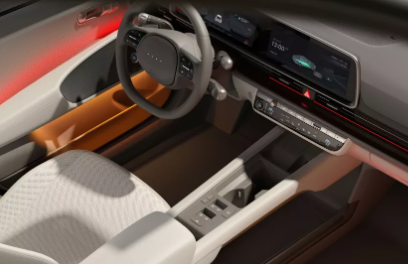
Hyundai’s new Ioniq lineup includes two electric vehicles, the Ioniq 6 being the second. Although we’ve already seen how the car appears, further details have now been made public.
The Ioniq 6’s increased range of 100 kilometers over the company’s initial Ioniq family member, the Ioniq 5, is one of the main talking points. Ioniq 6’s anticipated WLTP range, according to Hyundai, is over 610 kilometres (around 379 miles).
It appears that Tesla has some new competition when compared to the 374 miles of the Tesla Model 3 Long Range and up to 404 miles on the Model S. The Ioniq 6 will very definitely cost less than the Model S as well, and it may possibly fall within the $50,640/£57,490 pricing range for the Model 3 Long Range.
Although a Hyundai spokesman declined to comment on the Ioniq 6’s cost during an exclusive media preview, the company did say that it aims to uphold its tradition of premium affordability.
And if you find yourself at a superfast charger, you won’t have to wait long to recharge the Ioniq 6 because it accepts 400-V and 800-V top-ups, which, according to Hyundai, can recharge the battery from 10 percent to 80 percent in just 18 minutes.
An ‘electrified streamliner’
The Ioniq 6 is referred to by Hyundai as a “electrified streamliner,” which is a fancy term for a sedan or saloon. Whatever the design is called, we can all agree that it has been tuned to be as aerodynamic as possible.
In fact, the Ioniq 6 is the most aerodynamic vehicle the company has ever produced, with a drag coefficient of 0.21. This makes it slightly less slippery than the Mercedes EQS, which edges it out with a score of 0.20.
Two battery sizes will be available to customers: 53 kWh and 77.4 kWh, with the smaller battery only being available in RWD (rear wheel drive) and the bigger battery being available in RWD or AWD (all wheel drive).
The Ioniq 6 can accelerate from 0 to 100 kilometers per hour (0 to 62 mph) in 5.1 seconds (that’s the AWD model with a power output of 239 kW), so it won’t be left behind when the lights turn green.
The vehicle’s sweeping, low drag styling contributes significantly to the enhanced range we previously noted, and its wheelbase has been extended compared to the Ioniq 5 (both vehicles are constructed on Hyundai’s E-GMP platform) to produce a larger, dome-shaped interior space for occupants.
Inside the dome
When parked, the company’s “Relaxation Comfort Seat” can recline almost completely flat, allowing you to recharge both your body and your vehicle. During the presentation we saw, much was made of the interior area, which was touted as a “living environment on wheels” with plenty of sustainable materials utilized in the finishes.
The driver has access to all the necessary controls on a sizable central console located between the front seats, while the door panels are largely button-free.
Hyundai also emphasized that if you want to work while your car is parked or charging, you can put your laptop on the center console. The Ioniq 6 has four USB-C ports, one USB-A connector, as well as a standard household power outlet under its second row of seats, so there are enough of power sources for your gadgets.
You may utilize the battery in the Ioniq 6 to power or charge other items, even other EVs, thanks to the V2L (vehicle to load) reverse charging method that we tested on the Ioniq 5.
Additionally, there are two enormous 12-inch displays: one behind the steering wheel that serves as the instrument cluster, and the other in the center that supports touch input and serves as the main infotainment display. Additionally, a Bose sound system is included, and Android Auto and Apple CarPlay are both supported.
The Ioniq 6 does away with the conventional side mirrors for digital cameras in order to reduce drag. Instead, the ends of the dash curve upward to house the screens for the digital mirrors. Digital mirrors aren’t a new technology, but Hyundai’s execution of them might be among the best so far.
Although the Hyundai Ioniq 6 price has not yet been announced, we do know that it will be available to purchase in South Korea and a few other European markets by the end of 2022.
The first Ioniq 6 won’t be available for purchase in the US until 2023, with production considerably increasing globally starting in 2019. Hyundai anticipates opening the order book for the Ioniq 6 during this year’s fourth quarter (October to December).
You can also check Toyota Camry review and you need to know about it

